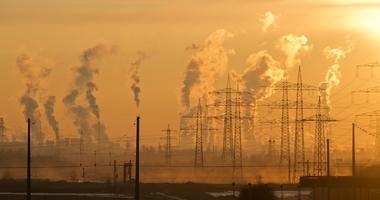
Fast Fashion Is a Climate and Justice Nightmare
Buyer beware: those low price points come with an awfully big carbon footprint.
The clothes served up by stores like Forever 21, H&M, Zara, and other similar retailers are smart, stylish, on-trend, and importantly, affordable – and who doesn’t want to look smart, stylish, and on-trend all at a reasonable price? It seems like a win-win for shoppers and retailers, but buyer beware: those low price points come with an awfully big carbon footprint.
Much of the fashion industry works to create and sell affordable clothing inspired by rapidly changing trends, often called “fast fashion.” The term “describes the quick turnover of fashion trends and the move towards cheap, mass-produced clothing - with new lines constantly released,” according to the BBC.
Fast fashion can mean lower prices, sure – but those cut costs can also have increasingly negative environmental and social impacts.
How Big is the Problem?
To be effective advocates for a better, just, and more sustainable tomorrow, we need to be more conscious of what we buy, where we buy from, and how often we’re shopping.
That’s as true for clothing as it is for food – and problems both climactic and justice-oriented exist at every stage of fast fashion’s lifecycle. Heck, just dying the clothing alone requires 43 million tons of chemicals each year.
And while it doesn’t have the reputation of, say, Big Oil, the fashion industry has a sizable emissions footprint. By some estimates, it accounts for anywhere from 2% all the way up to 10% of overall global emissions. That feels like an almost superfluous amount when you consider that transportation – a sector well-known for its tailpipe pollution, and regulated accordingly; but also one performing a vital service in our culture – accounts for around 15% of global emissions. Garment production also contributes more climate changing emissions than aviation and shipping combined.
But emissions are only part of fast fashion’s long line of faux pas. In 2015, the fashion industry – which is looking to grow production by 63% by 2030 – swallowed up almost 80 billion cubic meters of fresh water, producing 92 million tons of waste in the process.
That same year, it emitted over a million tons of CO2.
Fashion is a massive, multi-trillion dollar industry that employs 75 million people worldwide – it’s also one the UN believes to be in a state of “environmental and social emergency.”
A Matter of Justice
This isn’t simply a matter of climate, however.
The garment industry is ubiquitous for having “dangerous working conditions due to unsafe processes and hazardous substances used in production. Costs reductions and time pressures are often imposed on all parts of the supply chain, leading to workers suffering from long working hours and low pay,” according to the UN.
Now, for a little more salt in the wound: The textiles industry is also a major contributor to plastic entering our oceans. The same oceans that we rely on for food and that millions depend on for their livelihoods.
We have plenty of facts and figures to back up the fast fashion industry’s negative environmental impact, but we’re not sure there will every truly be words to describe the human impact.
It’s no secret that garment workers around the world are treated incredibly poorly. They endure long working hours and are often subjected to temperature extremes as well as dangerous chemicals and machines.
“The plight of some of those who make our clothes came into shocking relief in 2014, when 1,138 garment workers lost their lives in the collapse of the Rana Plaza factory complex in Bangladesh,” according to the BBC.
What You Can Do
What we wear is a form of personal expression – and you can choose to express your values when it comes to the health of the planet by avoiding fast fashion.
Reduce Your Consumption
We hate to break it to those lining their pockets with profits from fast fashion, but the only way for the industry to scale back its emissions is for it to produce less, not more. No amount of “eco-friendly” advertising is going to change that.
The biggest issue with fast fashion, at least environmentally, is the pace at which it operates. That’s right: Fast fashion needs to slow down.
What we now have is a behemoth industry effectively built on the idea that a piece of clothing is on-trend for a very brief amount of time, and that if you want to look stylish, you need to be constantly refreshing your closet with new items.
Being too deeply concerned with trends is like being a hamster on a wheel, though, going and going but never really getting anywhere. We recommend you step off the wheel and challenge yourself to buy less.
That’s right. Start by not purchasing something, especially clothing, for a few days, then a week or even a month. We expect you’ll be quite surprised how little you really needed all those things you thought you just had to have.
Speak with Your Wallet
When you do need to shop for clothing, start by checking a local thrift store or websites that sells vintage, designer, and lightly used clothing before buying new.
As the consumer, you are the boss. Buying secondhand items is a great way to lessen your carbon footprint. (And if enough people did it… well, that’d be a lot of carbon kept out of the atmosphere.)
If you’re financially able, purchase fewer items of higher quality that will last you longer. Repair the clothes you have. Purchase items made from recycled materials. Or you could even organize a clothing exchange with your friends to revamp your wardrobe without spending a dime!
If you have the financial means to buy from almost any type of brand, choose brands that are sustainable and ethical in their practices – and double check those claims of sustainability. All the information you need about a brand’s environmental impact is likely little more than a few clicks away from this very webpage.
And be sure to stay up to date on the latest in climate solutions by signing up for our email list.




